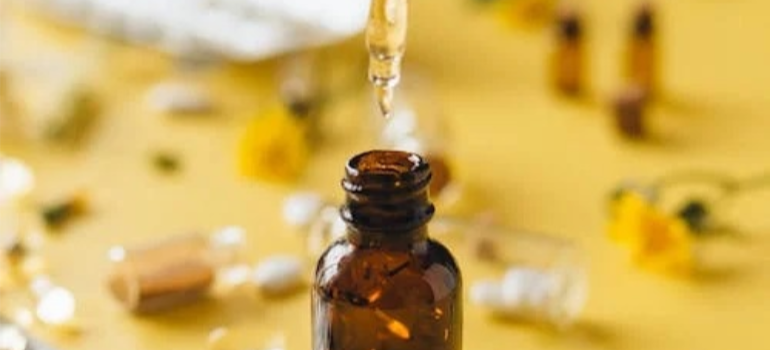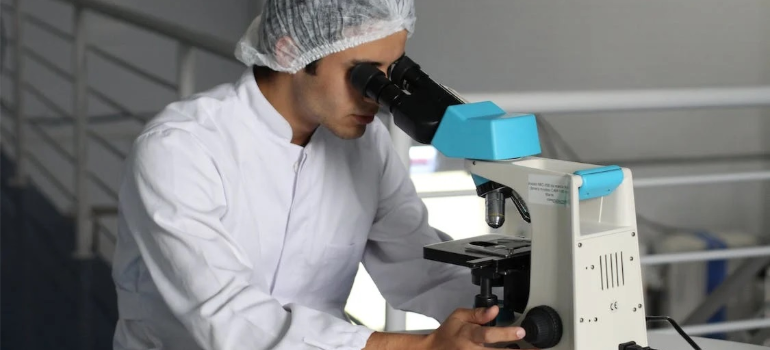Harmony Ridge Recovery Center explores the effects and dangers of microdosing. This intriguing practice has captured attention for its potential to aid individuals in rehab and beyond. While offering promising results, however, it’s not without its complexities. Microdosing seems to offer hope, yet navigating its risks and limitations requires a thorough understanding. We have noted this renewed interest in this contentious subject. As a premier center for drug and alcohol rehab in West Virginia, we feel obliged to explore it in due depth to best serve our readers and communities. Join us as we shed light on both the positive aspects and potential pitfalls of microdosing.
What Is Microdosing?
Because of its interpretations in everyday language, the term “microdosing” may indeed produce some confusion.
Microdosing refers to ingesting minuscule quantities of psychedelic substances, like LSD or psilocybin mushrooms. This practice aims to harness subtle effects, avoiding a full-blown psychedelic journey. The rationale lies in the potential to enhance mood, focus, and creativity while sidestepping overwhelming experiences.
Commonly, psychedelics and other mind-altering compounds are utilized for microdosing, often with the hope of reaping positive effects. Our center for drug rehab near Athens OH has seen such attempts, so our personal experience compels us as well. However, the effects and dangers of microdosing remain a complex topic.

What Is a Microdose?
What makes concise definitions harder is, in part, that there is no universal standard for a microdose. The Harvard Medical School writes:
“There isn’t a single, clearly recognized definition of microdosing for any psychedelic drug, and this complicates attempts to perform consistent research. One definition is approximately 1/5 to 1/20 of a recreational dose. […] One obstacle is that the potency of mushrooms can vary greatly, as they are not regulated outside of clinical trials, so this isn’t an exact science.”
In addition, practical limitations to dose regulation also emerge – as they continue:
“Given its current illegality and lack of regulation, there is no good way to know what dosage you are taking unless you have an extraordinarily reliable supplier. LSD is an extremely powerful and long-acting drug, and you don’t want to take more of it than intended. Further, psychedelics such as psilocybin and LSD can produce physiological tolerance, which might suggest that, even if microdosing does help, there could be diminishing returns if one stays at the same dosage.”
As such, these factors present some complications. Still, an average microdose may range from 1/5 to 1/20 of a recreational dose. This dosage is, typically, what studies on the effects and dangers of microdosing also focus on.
Motivations Behind Microdosing in Non-rehab Contexts
There are many reasons why people consider experimenting with microdosing, ranging from a quest for heightened creativity and cognition to an aspiration for overall well-being. Individuals often engage in microdosing to tap into potential cognitive benefits without the full psychedelic experience.
Moreover, as we’ll explore later, microdosing has extended its applications to rehab settings, shedding light on its effects and dangers. One notable example comes in alcohol rehab, as individuals may attempt to self-detox through microdosing. Operating the alcohol rehab center Marietta OH trusts, this observation did, in part, inspire this article.

Potential Benefits of Microdosing in Rehab
With the above in mind, here we can delve into the potential applications of microdosing in rehab contexts specifically. Battling the disease of addiction comes with an array of challenges, some of which microdosing offers to assist with.
#1 Increased Focus and Creativity
First, anecdotal reports highlight increased focus and creativity as potential benefits of microdosing in rehab. Microdosing may induce positive alterations in brain function and perception, potentially aiding individuals in their rehabilitation journey. Indeed, Nature writes:
“The most widely endorsed motivation for microdosing was Enhancing Mindfulness, followed by Improving Mood, Enhancing Creativity and Enhancing Learning. Respondents with and without mental health and substance use concerns differed in proportion endorsing all motives except for Enhancing Mindfulness and Enhancing Creativity, which were highly endorsed across groups.”
Such motives do appear substantive, too, as the study “identified lower levels of anxiety and depression among microdosers relative to controls.” Exploring these effects and dangers of microdosing can reveal its role in enhancing cognitive processes within rehab contexts.
#2 Mood Enhancement and Emotional Well-being
As the above study shows, reports from our center for rehab Huntington WV offers indicate that microdosing in rehab might contribute to mood enhancement and improved emotional well-being. Anecdotal evidence suggests that microdosing could potentially alleviate symptoms of depression, anxiety, and other mental health conditions.
Notably, however, such data remains questionable. Still, it could provide valuable insights into its therapeutic potential for emotional wellness within the rehab framework.

#3 More Comfortable Detoxification
Microdosing within rehab settings may offer a distinct advantage by facilitating a more comfortable detoxification process. Unlike traditional methods involving gradual reduction of addictive substances, microdosing could potentially mitigate withdrawal symptoms more effectively. This approach may minimize discomfort and enhance the overall rehab experience.
This is particularly noteworthy for substances that come with more severe withdrawal symptoms. Fentanyl detox treatment in WV is a notable example where detoxification can significantly challenge the individual. As such, by analyzing the effects and dangers of microdosing, we can assess its role in revolutionizing detox programs and rendering them less distressing for individuals seeking recovery.
Lack of Scientific Evidence and Research Limitations
Having outlined the above, however, we should also note that the practice does not enjoy unquestionable approval by medical professionals. There are ample reasons for this skepticism, as we’ll explore next. It also comes with ethical and legal considerations, which also bear noting.
#1 Limited Scientific Research
Acknowledging the limited scientific research on microdosing is crucial when considering its effects and dangers. While anecdotal accounts are abundant, rigorous scientific studies investigating the long-term consequences and potential risks remain sparse.
To illustrate this point, Science Direct’s systematic review notes:
“Studies showed a wide range in risk of bias, depending on design, age, and other study characteristics. Laboratory studies found changes in pain perception, time perception, conscious state, and neurophysiology. Self-report studies found changes in cognitive processing and mental health. We review data related to expectation and placebo effects, but argue that claims that microdosing effects are largely due to expectancy are premature and possibly wrong.”
As such, to make informed decisions about the use of microdosing in rehab or other contexts, it’s imperative to recognize the need for comprehensive research that explores both the effects and dangers of microdosing.

#2 Inherent Controlled Study Challenges
Conducting controlled studies on microdosing presents formidable challenges due to legal and ethical constraints, affecting our understanding of its effects and dangers. As the rehab center Fairmont WV trusts, we feel compelled to stress this point strongly.
Labeling numerous psychedelic substances as controlled substances hinders thorough research, making it hard to study them properly. This emphasizes the need to overcome regulatory obstacles to gain a better understanding in diverse settings, including rehabilitation.
#3 The Need for Rigorous Research
As outlined above, a pressing necessity exists for rigorous research to comprehensively grasp the long-term effects and dangers of microdosing. By conducting systematic studies, we can clarify the true extent of the benefits and risks associated with microdosing, especially within rehabilitation contexts. BMC’s Harm Reduction Journal writes:
“The findings presented here suggest a number of potential microdosing research avenues, though experimental, hypothesis-driven studies are needed. The MDBC taxonomy, behavioural improvements, and substance-use reductions warrant RCTs to test therapeutic safety and efficacy of microdosing psychedelics. […] We call researchers to do this work following the principles of open science and share our resources accordingly.”
Building a strong base of scientific evidence will help us make informed decisions and better understand whether the benefits of microdosing outweigh its drawbacks.

Risks and Dangers of Microdosing
While microdosing holds promise, it’s essential to acknowledge the potential risks and dangers associated with this practice. Some notable risk factors include:
- Unpredictable Effects and Variability: Microdosing can result in unpredictable reactions due to factors like individual differences in metabolism and brain chemistry. Effects can be inconsistent, making it challenging to anticipate outcomes accurately.
- Risk of Dependency and Substance Abuse: Frequent microdosing may carry the risk of developing a psychological dependency on the substance. Over time, this could lead to substance abuse, as our rehab center near Cambridge OH has seen, hindering rehabilitation efforts and overall well-being.
- Individual Variability and Tolerance: People vary widely in their response to microdosing. What works well for one person might not be suitable for another due to differences in tolerance and sensitivity. This variability can lead to unintended consequences.
Legal and Ethical Considerations
Legal and ethical considerations are paramount when discussing the effects and dangers of microdosing. As mentioned, the classification of many psychedelic substances as controlled or illegal poses challenges for research and implementation. Navigating these complex legal frameworks is essential to ensure the safety and well-being of individuals engaging in microdosing practices. As Griffen Thorne writes for Harris Bricken:
“A large amount is as illegal as a small amount, though penalties may be different. Persons who microdose psilocybin in cities (for example) that have decriminalized it may be at lesser risk of local prosecution, but that’s it. Federal and even state authorities may still prosecute even microdosing. And there’s no protection at all for commercial activities.”
Additionally, addressing ethical concerns surrounding informed consent, potential harm, and responsible use is crucial for developing a balanced approach that maximizes potential benefits while minimizing risks. As microdosing gains attention in various contexts, it is imperative to uphold legal compliance and ethical principles to foster a thorough understanding of its implications.

Lack of Standardization and Quality Control
The effects and dangers of microdosing are exacerbated by the lack of standardization and quality control. Inconsistent dosages and purity levels in substances used for microdosing can lead to unintended effects, making it challenging to predict outcomes accurately. Our rehab center near New Lexington OH has seen cases where poor microdosing kindled addiction, overshadowing any potential benefits.
This variability raises concerns about safety and the potential for adverse reactions. Without proper quality control measures, individuals engaging in microdosing practices are exposed to greater risks, potentially hindering the benefits that this approach could offer. Addressing this issue through standardized dosing protocols and quality assurance measures is essential to ensure the responsible and safe use of microdosing within rehabilitation and other contexts.
Should You Microdose?
Considering the risks of microdosing, it’s vital to seek professional guidance beforehand. Individuals interested in microdosing should prioritize mental health monitoring and seek support from qualified experts. Consulting with healthcare professionals, therapists, or addiction specialists can provide personalized insights into the potential benefits and risks based on individual circumstances. Their expertise can help you make informed decisions and establish a comprehensive plan that considers their unique needs.
With proper guidance, monitoring, and support, those considering microdosing can navigate the complex landscape of potential benefits and risks while prioritizing their overall well-being.

Call Harmony Ridge Recovery for Guidance
Exploring the effects and dangers of microdosing reveals a complex landscape. While microdosing holds the potential for aiding individuals in rehab and other contexts, its benefits are not without potential pitfalls. The subtle effects and reported improvements in focus, mood, and well-being suggest promise, yet the lack of standardized dosing, quality control, and comprehensive research raises concerns.
As the allure of microdosing grows, it is crucial to approach it with caution. Seeking professional guidance, considering individual variability, and acknowledging legal and ethical considerations are essential steps.
If you or your loved ones need further information on microdosing, Harmony Ridge Recovery is here for you. Please feel free to contact us today, and our teams will be happy to assist you.



